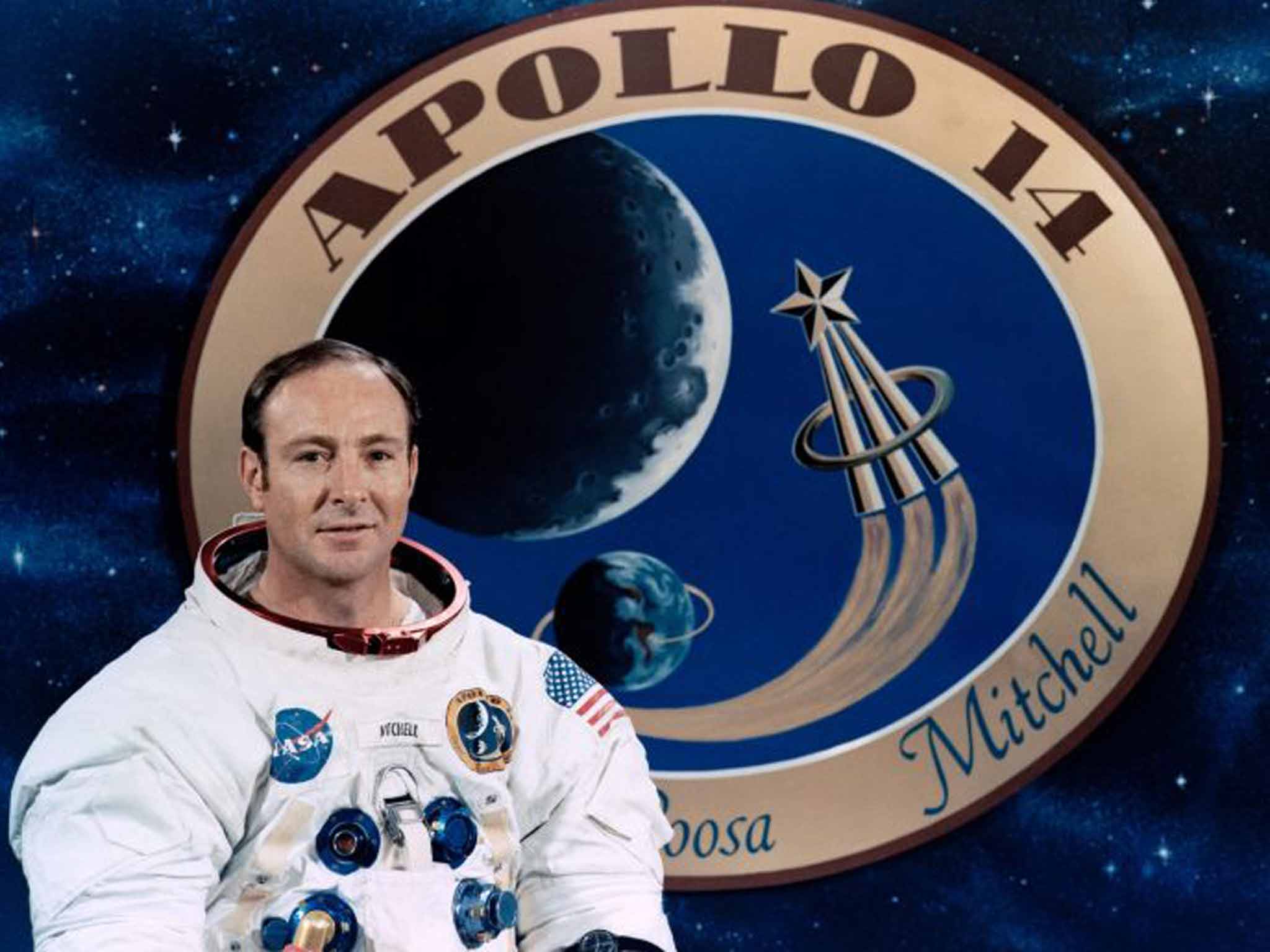Doctor Edgar Mitchell: 'Apollo 14' astronaut whose experiences convinced him to devote the rest of his life to psychic phenomena and UFOs
The stoic Texas-born test pilot and Navy veteran embarked on a decades-long quest to reconcile the worlds of science and metaphysics, interstellar exploration and personal growth

The astronaut Edgar Mitchell was spiritually transformed by his journey to the Moon in 1971 and he devoted much of the rest of his life to exploring esoteric realms of science, psychic phenomena and the existence of extraterrestrial beings. He was the lunar module pilot aboard Apollo 14, which took off from Cape Kennedy on 31 January 1971. Veteran astronaut Alan Shepard was the mission commander, Stuart Roosa pilot of the command module.
Shepard and Mitchell spent 33 hours on the moon, the longest period of any astronauts, including more than nine hours outside the module. They carried out scientific experiments and brought back about 100lb of moon rock and other lunar materials. Shepard pulled out a 6-iron and made three golf shots. Mitchell used a camera to record some of their exploits, among them a striking image of Shepard alongside an American flag.
During the nine-day voyage, Mitchell surreptitiously carried out experiments in ESP. Fewer than 10 percent of the experiments succeeded, but he considered the number statistically significant, and when he returned to Earth, he knew that his life was forever changed.
“The experience I had on the flight was akin to a religious experience,” he said in 1974. “It was euphoric, one of those rare moments in life when you seemed to be able to reach out and touch the universe, when you had an intuitive flash about the real meaning of truth.”
For two years, he didn't shave the beard that had begun to sprout as he stood on the Moon. The stoic Texas-born test pilot and Navy veteran, who had a doctorate from MIT, embarked on a decades-long quest to reconcile the worlds of science and metaphysics, interstellar exploration and personal growth.
He underwent hypnosis and deep-relaxation techniques to try to recapture the emotions of the return flight. “What I experienced during that three-day trip home was nothing short of an overwhelming sense of universal connectedness,” he wrote in his memoir, The Way of the Explorer. Within a year, he retired from Nasa and began to investigate such fields as acupuncture, astrology, telekinesis, Gestalt therapy, fire-walking and healing techniques.
He founded the Institute of Noetic Sciences, which sought to blend science with consciousness-raising. “There's a very large proportion of people who think I'm totally crazy,” he said in 1988. “I'm sorry they have such tunnel vision about what the nature of reality is.”
Mitchell became something of an odd man out among astronauts, some of whom would not comment publicly about him. He said he had never seen a UFO, but was outspoken in his belief that aliens had probably visited Earth and that the government covered up the evidence. “Dr Mitchell is a great American,” a Nasa spokesman said, “but we do not share his opinions on this issue.”
He was born in 1930 into a Texas ranching family. During the Depression, he moved to New Mexico. While walking to school near Roswell, he would pass the home of Robert Goddard, whose early experiments in rocketry helped propel the US into space. Mitchell learned to fly when he was 13. After graduating in 1952 from what is now Carnegie Mellon University, in Pittsburgh, he joined the Navy as a pilot. He served in the Korean War.
After gaining a doctorate in aeronautics and astronautics from MIT, joined Nasa's astronaut corps in 1966. In 1970 he worked in the lunar module simulator at the Johnson Space Center in Houston during the Apollo 13 mission. An on-board explosion nearly caused the spacecraft to be lost as it approached the moon. He devised procedures to help the crippled space capsule return to Earth, for which he received the Presidential Medal of Freedom.
In 1975, Mitchell settled in Florida, where he had a somewhat tempestuous personal life. “It was the White House one day, some yoga guru the next,” his second wife, Anita Mitchell, said. “Cary Grant would call one day, and then we'd have a bunch of Sufi dancers whirling in our living room. Uri Geller would come by and bend some metal. I must have met all the nuts, flakes and fruits in the whole granola box.”
Mitchell's first two marriages ended in divorce, and in the 1980s he was ordered to pay $1,200 a month in child support to Sheilah Ann Ledbetter, a former Playboy playmate who had filed the paternity suit. She and Mitchell were married and later divorced.
In 2011, Mitchell was sued by Nasa when he tried to sell an Apollo 14 camera, saying that it would have been left on the Moon had he not brought it back. In a settlement, he donated it to the National Air and Space Museum. In person, he could be physically imposing, intellectually intense, and alternately compelling and contradictory. He was health-conscious but a heavy smoker, a scientist who maintained that he had been cured of kidney cancer by a psychic. Anita, his former wife, said, “He's the damnedest study of the human psyche you'll ever come across.”
Edgar Dean Mitchell, astronaut: born Hereford, Texas 17 September 1930; married firstly Louise Randall (marriage dissolved; two daughters), secondly Anita Rettig (marriage dissolved), 1989 Sheilah Ann Ledbetter (marriage dissolved; one son deceased); died West Palm Beach, Florida 4 February 2016.
© The Washington Post
Join our commenting forum
Join thought-provoking conversations, follow other Independent readers and see their replies
Comments
Bookmark popover
Removed from bookmarks